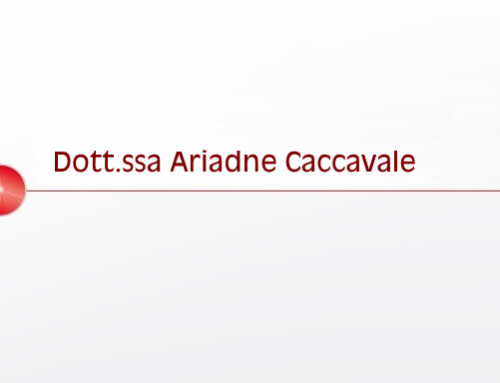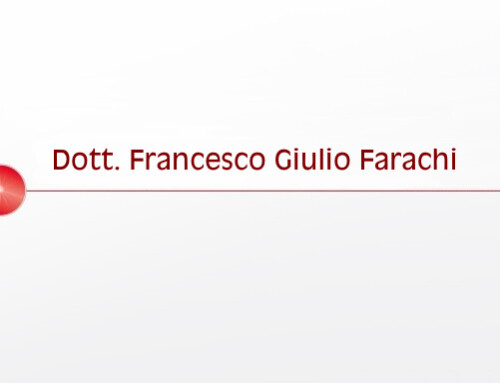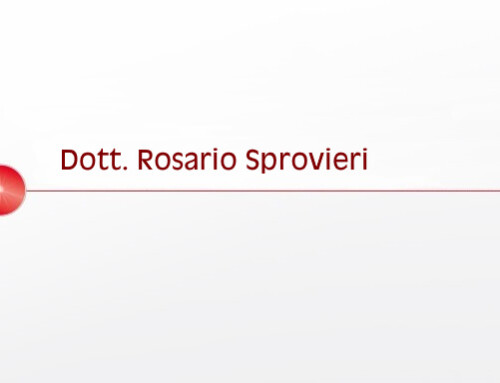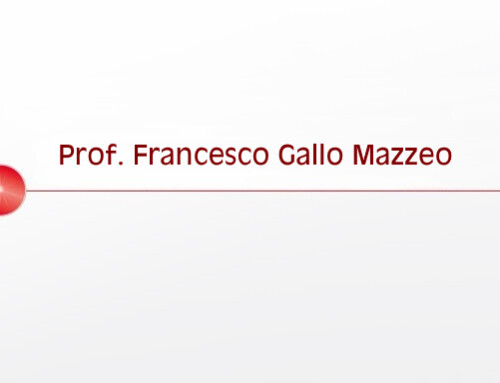
![]()
Titolo: Arte e simbolo
Sottotitolo: Miti e archetipi della cultura classica tornano protagonisti della pittura contemporanea
di Rosa Orsini
E’opinione comune che le avanguardie abbiano trasformato il concetto di arte, relegando la tradizione accademica in un girone di forzato oblio. Pittura e forma plastica di ispirazione naturalistica hanno ceduto il passo ad una visione astratta dell’espressione artistica che ha fatto scuola nel corso del ‘900.
Nonostante ciò la fascinazione di antichi archetipi permane nel nostro inconscio tramite lo studio dei classici greci e latini, nelle cui opere ritroviamo le radici della nostra cultura occidentale. Oggi le reminiscenze di una ricca elaborazione fantastica e favolistica, di quella vasta letteratura epica e mitologica traghettataci nel corso dei secoli, riecheggia tramite l’estro dell’artista che le riporta alla luce, facendole rivivere, con le debite rivisitazioni che le avvicinano ai nostri tempi. Rivisitazione che non vuol dire stravolgimento del soggetto originario, ma attualizzazione dello stesso in funzione di una elaborazione mentale che guarda al contenuto, al prodotto creativo riflettuto sul valore concettuale e simbolico degli elementi compositivi. Oggi come ieri Il passato, argomentato all’interno di una possibile produzione artistica, è ancora capace di suscitare stupore ed emozione.
E’ il caso di Alessandra Casciotti, artista romana che approda sul palcoscenico dell’arte contemporanea esponendo tele di chiara ispirazione neoclassica. Una pittrice dalle grandi potenzialità espressive, che grazie ad una ineccepibile capacità tecnica e la grande passione che mette nel suo lavoro, ritrova nella storia passata l’ispirazione per i suoi soggetti. E’ una pittura che viaggia controcorrente perché ignora le antinomie dettate dal linguaggio astratto, per rifugiarsi in un figurativo intriso di simboli e significati. Elementi che riversa anche in quei quadri di impostazione geometrica e concettuale, che arricchiscono il corpus delle sue opere, e che si pongono come superamento di un unicum stilistico.
Protagonista di numerose mostre collettive e personali, l’abbiamo vista esporre lo scorso ottobre a Roma, con la mostra di pittura “Vis Symbolica – il fascino dei significati” alla galleria “La Pigna”, per poi ritrovarla, a novembre, presentare a Napoli a palazzo Zapata la personale “Forma Mentis – figure e geometrie, visione e concetto” promossa dalla ”Fondazione Circolo Artistico Politecnico”, cui l’artista ha fatto dono dell’opera “Shirodhara”.
Alessandra Casciotti dipinge ciò che per lei rappresenta l’arte, ponendosi in rapporto con la nostra cultura occidentale. Un rapporto dialettico che approda ad una riflessione profonda..
Il quadro “Espressioni dell’Arte”, può assurgere a manifesto della sua visione pittorica. La grande tela, concepita visivamente come un polittico, contiene in sé una visione rinascimentale dell’arte, di un pensiero che ruota intorno al concetto di nuovo umanesimo. Le sei formelle dove sono rappresentate le varie arti, dalla scultura alla pittura alla danza, dalla scrittura alla musica, incorniciano una scena centrale, dove appare una donna con il capo cinto da una corona d’alloro. Evidente il significato allegorico dell’arte, che introduce non solo al soggetto ma anche all’uso di strumenti dialettici, come il simbolo, l’allegoria, la metafora. Elementi assunti in chiave pittorica che delineano il suo stilema.
La sua concezione artistica rinnova e attualizza il ruolo dell’elemento immaginifico. La fascinazione del mito ispira le sue opere che ripropongono al pubblico l’archetipo della divinità greca. La Casciotti ha una impostazione classica della pittura, che si rivela tanto nella stesura formale quanto nei contenuti. La pennellata è fluida, morbida, vellutata. La resa finale, perfetta. La composizione progettata minuziosamente rivela una profonda riflessione ante operam per approdare alla rappresentazione di figure ed elementi, in cui ricerca la dimensione di antico propria delle sculture greche.
L’estetica sposa il mito. Nel chiaro riferimento al simbolo e alla divinità, la Casciotti ripropone quella bellezza classica che si rivela nella proporzione delle parti, nel vigore della muscolatura, nella serenità senza tempo del volto. Nettuno, Afrodite, Tyche, Minerva, sono immagini iconiche, sono riflesso fedele dell’archetipo così come noi lo ricordiamo. L’artista li ritrae affiancandoli ad elementi simbolici e riproducendo nel gesto, nell’azione, la caratteristica umana che, sublimata, si identifica col divino.
Uso del simbolo che la Casciotti orchestra magistralmente anche nella rivisitazione favolistica, come nel quadro “ Le Metamorfosi”, selezionata e premiata da Vittorio Sgarbi nel 2016 ad Arte Salerno, dove il passaggio da bruco a farfalla è dominato da una maschera bianca su uno sfondo nero, un’identità senza volto e senza genere. L’artista sa avvalersi del simbolo anche quando decide di rappresentare le stagioni. Il contesto non è soltanto naturalistico, caratterizzato quindi dalle mutazioni climatiche, ma è uno spazio sacro, dove inserisce figure allegoriche. La primavera, rappresentata da una fanciulla, e l’inverno, impersonato da un vecchio saggio, forse un profeta, possono ricordare anche le età dell’uomo e quindi richiamare alle stagioni della vita. Nella realizzazione dell’impianto compositivo l’artista non ricorre a sovrastrutture architettoniche. Sono rappresentazioni di una dimensione metafisica, di una spazialità senza tempo. Passa dalle atmosfere bucoliche a scenografie interne incorniciate da rossi sipari. Inquadrature corali che suggeriscono baccanali, oppure antichi misteri orfici o eleusini, accompagnati dal canto e dalla danza delle muse. Sono templi riscaldati da bracieri che inneggiano alla sacralità del fuoco ancestrale, eretti davanti all’erma di un volto canuto, posto sopra l’effige di un’aquila, a significare il dominio del potere divino sul potere materiale. Analogo discorso per “Amore Trionfante” che irrompe all’interno di uno spazio senza dimensione, su un carro trainato da impetuosi cavalli, sottomettendo i simboli del materialismo, il denaro, la fama, la forza, infine il potere temporale. L’amore vince su tutto, potente, indomito e coraggioso. Quanti significati si possono dedurre dai dettagli e che ci inducono a riflettere sul recupero di valori dimenticati.
Pittura quindi come iniziazione di un percorso conoscitivo. L’artista sa attualizzare il simbolo anche attraverso il linguaggio astratto o geometrico, offrendoci la chiave di lettura del suo pensiero.
La chiave, non solo come elemento compositivo ma come soggetto concettuale. Nel quadro “Opportunità” ci invita ad aprire le porte della conoscenza. Ma bisogna usare la chiave giusta per attivare l’energia creativa. Otto chiavi, una per accedere alla fortuna, una per conquistare l’amore, e così via. Non ci promettono la felicità ma ci inducono a ricercare in noi stessi la via per la concretizzazione dei nostri obiettivi.
L’arte si sposa infine con la realizzazione di sé stessi. L’espressione artistica si rivela essere un passaggio obbligato che induce l’uomo a risvegliare la capacità critica, la passione, la pulsione vitale, riconoscendosi nel mito ed a camminare sul sentiero della perfezione, che pur restando un’utopia, è pur sempre stimolo per approdare alla virtù.
![]()
Title: Art and Symbol
Subtitle: Myths and archetypes of classical culture return as main characters in contemporary painting
It is a common opinion that the avant-gardes have transformed the concept of art, relegating academic tradition in a circle of forced forgetfulness. Painting and plastic form of naturalistic inspiration have yielded the step to an abstract vision of the artistic expression that created the rules during the ‘900.
Despite this, the fascination of ancient archetypes remains in our unconscious through the study of the Greek and Latin classics, in whose works we find the roots of our Western culture. Today the reminiscences of a rich and fabulous imaginary elaboration, of that vast epic and mythological literature brought to us over the centuries, echoes through the artist’s inspiration that brings them to light, making them live again, with the due reinterpretations that bring them closer to our times. Reimagining that does not mean distortion of the original subject, but actualization of the same in function of a mental elaboration that looks at the content, to the creative product reflected on the conceptual and symbolic value of the compositional elements. Today as yesterday the past, argued within a possible artistic production, is still capable of arousing amazement and emotion.
This is the case for Alessandra Casciotti, a Roman artist who arrives on the stage of contemporary art exposing canvases of clear neoclassical inspiration. A painter with great expressive potentialities, who thanks to an impeccable technical ability and the great passion she puts into her work, finds in history the inspiration for her subjects. It is a style of painting that travels against the mainstream because it ignores the antinomies dictated by abstract language, to take refuge in a figurative style imbued with symbols and meanings. Elements that she also pours into those geometric and conceptual paintings, which enrich the corpus of her works, and which stand out as the overcoming of a stylistic ‘unicum’.
She had been the protagonist of numerous collective and personal exhibitions, we have seen her exhibit last October in Rome, with the painting exhibition “Vis Symbolica – the charm of meanings” at the “La Pigna” gallery, and then we rediscover her in November, presenting in Naples at Palazzo Zapata the personal exhibit “Forma Mentis – figures and geometries, vision and concept” promoted by the “Fondazione Circolo Artistico Politecnico “, to which the artist has donated the work “Shirodhara”.
Alessandra Casciotti paints what for her represents art, placing herself in relation with our western culture. A dialectical relationship that leads to deep reflection. The picture “Espressioni dell’Arte” can rise to manifest her pictorial vision. The big canvas, conceived visually as a polyptych, contains within itself a Renaissance vision of art, and of a thought which revolves around the concept of new humanism. The six panels where the various forms of art are represented, from sculpture to painting to dance, from writing to music, frame a central scene, where a woman appears wearing a laurel wreath. The allegorical meaning of art that introduces not only to the subject but also to the use of dialectical tools, such as the symbol, the allegory, the metaphor is obvious.
Elements taken in a pictorial key that outline her style. Her artistic conception renews and actualizes the role of the imaginative element. The fascination of the myth inspires her works that present the archetype of the Greek divinity to the public. Casciotti has a classical education in painting, which is revealed both in the formal drafting and in the contents. The brushstrokes are fluid, soft, velvety. The final yield, perfect. The composition designed minutely, reveals a profound reflection “ante operam” to arrive at the representation of figures and elements, in which she researches the ancient dimension of Greek sculptures.
Aesthetics marry Myth. In the clear reference to the symbol and to the divinity, Casciotti proposes that classic beauty that reveals itself in the proportion of the parts, in the vigor of the muscles, in the timeless serenity of the facial expressions. Neptune, Aphrodite, Tyche, Minerva, are iconic images, they are a faithful reflections of the archetype as we remember it. The artist portrays them by placing them side by side with symbolic elements and reproducing in the gesture, in the action, the human characteristic which, sublimated, are identified with the divine.
A use of the symbol that Casciotti orchestrates masterfully in the fable reimagining, as in the painting “Le Metamorfosi”, selected and awarded by Vittorio Sgarbi in 2016 at Arte Salerno, where the transition from caterpillar to butterfly is dominated by a white mask on a black background, a faceless and genderless identity. The artist knows how to use the symbol even when she decides to represent the seasons. The context is not only naturalistic, therefore characterized by climatic changes, but it is a sacred space, where she inserts allegorical figures. Spring, represented by a girl, and winter, played by an old sage, perhaps a prophet, can also remind someone of the ages of man and therefore recall the seasons of life. In the creation of the compositional system the artist does not resort to architectural superstructures. They are representations of a metaphysical dimension, of a timeless space. She switches from bucolic atmospheres to interior settings framed by red curtains. Choral framings that suggest bacchanals, or ancient orphic or eleusine mysteries, accompanied by the song and dance of the muses. They are temples heated by braziers that praise the sacredness of the ancestral fire, erected in front of the herms of an ancient face, placed above the effigy of an eagle, signifying the dominion of divine power over material power. A similar argument can be made for “Amore Trionfante” that breaks into a space without dimension, on a chariot drawn by impetuous horses, submitting the symbols of materialism, money, fame, strength, and finally temporal power. Love wins over everything, powerful, indomitable and brave. How many meanings can be deduced from the details and they lead us to reflect on the recovery of forgotten values. Painting therefore as initiation on a cognitive path. The artist knows how to actualize the symbol also through abstract or geometric language, offering us the key to understand her thought.
The key, not only as a compositional element but as a conceptual subject. In the picture “Opportunità” she invites us to open the doors of knowledge. But you have to use the right key to activate creative energy. Eight keys, one to access luck, one to conquer love, and so on. They do not promise us happiness but they lead us to look into ourselves to realize our goals.
Finally, art is combined with the realization of oneself. The artistic expression turns out to be an obligatory passage that induces man to awaken the critical ability, the passion, the vital impulse, recognizing himself in myth and walking on the path of perfection, which while remaining a utopia, is still an incentive to arrive to virtue.




